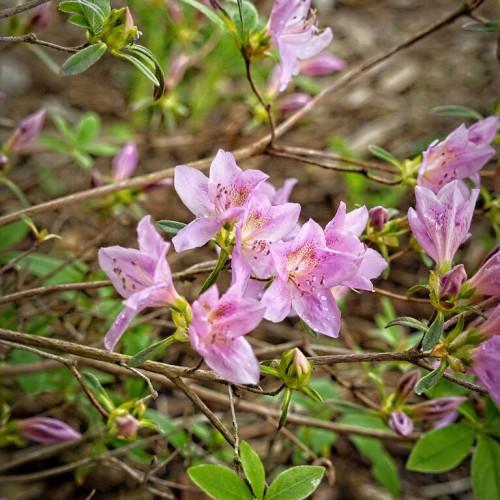
deciduous azalea
Rhododendron 'Cecile'
Cycle:
Perennial
Watering:
Average
Hardiness Zone:
5 - 8
Flowers:
Flowers
Sun:
Part shade
Leaf:
Yes
Growth Rate:
Low
Maintenance:
Moderate
Poisonous To Pets:
Yes
Care Level:
Medium
watering
Deciduous azaleas, such as Rhododendron 'Cecile', need to be watered regularly throughout the growing season. This plant prefers moist, well-drained soil, so in times of moderate to low rainfall it is important to provide supplementary water to ensure that the soil remains moist. For most plants, this means about 1 inch of water per week, either through rainfall or an irrigation system. It is important to avoid saturating the soil, as that can lead to root rot. In times of extreme heat and drought, watering may need to be increased to prevent wilting and nutrient deficiencies. Azalea bracts are at risk of burning if sprayed with a hose, so it is best to apply the water directly to the soil. Overwatering should be avoided, as it can cause root rot and stunt the growth of the plant.
sunlight
Deciduous azalea (Rhododendron 'Cecile') is a plant species that needs full to partial sun to thrive. It does best in partial sun, meaning that it should receive 4 to 6 hours of sunlight per day. It is important to note that direct, hot afternoon sunlight should be avoided, as it can be too intense and cause damage to the plant. To achieve the best growth results, deciduous azalea should receive morning sun and shade from hot afternoon sun. During the summer months, when the sun is strongest, the plant should be given some light shade all day.
pruning
Prune deciduous azaleas, such as Rhododendron 'Cecile,' in late winter or early spring when the risk of late frost is minimal. Prune lightly to shape the plant and reduce the canopy size if necessary. Remove any dead, diseased or damaged branches as well as crossing branches. The majority of pruning should be done on overgrown plants that are producing few or no flowers. Pruning back 1/3 of the oldest woody branches will help encourage new growth and flower production. Make sure to cut back these branches to a side bud pointing outward so that new growth will have maximum air circulation.
